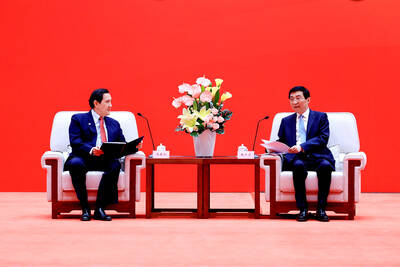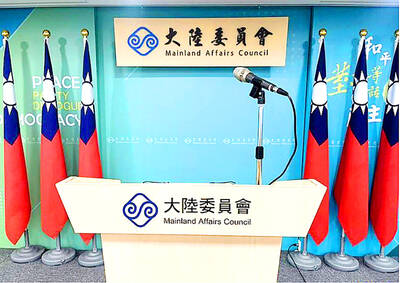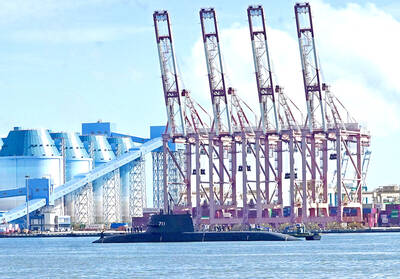Perhaps you recall the Yugos, tinny US$5,000 cars that shed their parts on US roads, provided owners could get them started.
The two-door Balkan clunkers now are remembered mostly for the jokes they inspired. Many are still found on Web sites: What do you call the shock absorbers in a Yugo? Answer: Passengers.
How do you make a Yugo go 60 miles an hour? Answer: Push it off a cliff.
So who, aside from a new generation of standup comics, wants to see these lemons back on highways, or their shoulders? Try Malcolm Bricklin, a sweet-talking promoter who has gone bankrupt selling gull-wing cars and motorized bikes in the past.
Bricklin, 63, was behind the Yugo's previous ill-fated US venture in the 1980s. He says he's now assured of high-quality auto production and has enough financing to promise drivers that they'll be satisfied.
"I've got lots of investors, lots of places to get money," he said. Bricklin is seeking 12 distributors who will each be required to appoint 15 to 25 dealers. All need to provide letters of credit and buy stock in his company, Bricklin said.
Some more Yugo jokes: How do you double a Yugo's value? Answer: Fill up the gas tank.
Or, man walks into auto parts store, says: "I'll take a gas cap for a Yugo." "Sounds like a fair trade," says the clerk.
These old jokes didn't stop PSA Peugeot Citroen, Europe's second-largest automaker, from announcing last week that it agreed to sell up to 5,000 engines a year to Yugoslavia's Group Zastava Cars, where the Yugos were manufactured.
The engines will enable Zastava to meet West European pollution regulations, increase exports and rebuild after a decade of war and economic collapse in Yugoslavia.
The Zastava factory in Serbia, damaged by a NATO air strike in 1999, managed to resume production with funds from Slobodan Milosevic's government.
Still, whether this plant can produce the 60,000 cars that Bricklin says he intends to sell by next year is debatable, to say the least. The factory only made 2,000 cars in the first quarter, and plans to raise output to 2,000 a month by May.
By the way, know what makes a Yugo faster? Answer: A tow truck.
Likewise, Yugo owners were glad the rear window was heated.
It kept their hands warm while pushing.
Whatever his shortcomings, Bricklin has a flair for sniffing out trends. Sometimes he's ahead of his time. In 1968, Bricklin and a partner were the first to import Subaru cars from Japan.
Then Bricklin left to build his gull-wing "safety car," the Bricklin SV-1, in the Canadian province of New Brunswick.
After turning out a few thousand cars, the venture ended badly for Bricklin -- and worse for workers and others stuck with his unpaid debts of US$30 million.
In 1985, he talked Zastava into giving him the US import rights to its model, built in Eastern Europe and based on outdated Fiat technology.
"The people at the factory still remember those days as the finest time in their lives," he says.
Not so the Americans who bought their output. The Yugos were the cheapest new cars on the block, but even Bricklin concedes they flopped because of poor quality. The workers had little incentive because "communism was still in force," he says.
Yugo imports folded in 1992 and Bricklin then tried his hand developing a bicycle powered by a 12-volt electric motor. That venture too went bust and investors lost several million.
While some owners boasted on Web sites that their Yugos had chalked up tens of thousands of miles, many more simply abandoned their cars when they stopped running and couldn't be repaired.
One Web site depicts junked Yugos that a Manhattan art professor's students remodeled into everything from a Yugo toaster and Yugo bath with running shower to a Yugo Porto-potty.
Now, after "vegetating" in Colorado a few years, Bricklin is back with a line of new Yugos, touting big plans and even bigger promises. "The car business is in my blood," he says.
Bricklin's company, Zastava Motor Works, will be based in Mahwah, New Jersey. The new Yugos or ZMWs -- initials that sound like another car -- will sell for US$5,000 to US$10,000, again making them the cheapest new cars on the block.
Bricklin says Zastava will be able to invest in quality car production since the war left the once overmanned factory with fewer workers to pay. Presumably, the flow of Peugeot engines will grow, and US dealers will be found to push the cars.
``He does have a magic touch where rounding up dealers is concerned,'' said David Davis, editorial director of Primedia Inc's Motor Trend magazine.
"The Koreans have a huge advantage, but you can't under-estimate him." In the 1980s, the Yugo collided with tough competition from South Korea's Hyundai Motor Co, which also imported cheap, low-quality cars. Now Hyundai is about to sell pricier models from a new factory in Alabama, leaving the bargain basement wide open for Bricklin.
Hey, wonder if the new Yugo's manual is like the old one.
That had a bus schedule.

CHIP WAR: The new restrictions are expected to cut off China’s access to Taiwan’s technologies, materials and equipment essential to building AI semiconductors Taiwan has blacklisted Huawei Technologies Co (華為) and Semiconductor Manufacturing International Corp (SMIC, 中芯), dealing another major blow to the two companies spearheading China’s efforts to develop cutting-edge artificial intelligence (AI) chip technologies. The Ministry of Economic Affairs’ International Trade Administration has included Huawei, SMIC and several of their subsidiaries in an update of its so-called strategic high-tech commodities entity list, the latest version on its Web site showed on Saturday. It did not publicly announce the change. Other entities on the list include organizations such as the Taliban and al-Qaeda, as well as companies in China, Iran and elsewhere. Local companies need

CRITICISM: It is generally accepted that the Straits Forum is a CCP ‘united front’ platform, and anyone attending should maintain Taiwan’s dignity, the council said The Mainland Affairs Council (MAC) yesterday said it deeply regrets that former president Ma Ying-jeou (馬英九) echoed the Chinese Communist Party’s (CCP) “one China” principle and “united front” tactics by telling the Straits Forum that Taiwanese yearn for both sides of the Taiwan Strait to move toward “peace” and “integration.” The 17th annual Straits Forum yesterday opened in Xiamen, China, and while the Chinese Nationalist Party’s (KMT) local government heads were absent for the first time in 17 years, Ma attended the forum as “former KMT chairperson” and met with Chinese People’s Political Consultative Conference Chairman Wang Huning (王滬寧). Wang

CROSS-STRAIT: The MAC said it barred the Chinese officials from attending an event, because they failed to provide guarantees that Taiwan would be treated with respect The Mainland Affairs Council (MAC) on Friday night defended its decision to bar Chinese officials and tourism representatives from attending a tourism event in Taipei next month, citing the unsafe conditions for Taiwanese in China. The Taipei International Summer Travel Expo, organized by the Taiwan Tourism Exchange Association, is to run from July 18 to 21. China’s Taiwan Affairs Office spokeswoman Zhu Fenglian (朱鳳蓮) on Friday said that representatives from China’s travel industry were excluded from the expo. The Democratic Progressive Party government is obstructing cross-strait tourism exchange in a vain attempt to ignore the mainstream support for peaceful development

DEFENSE: The US would assist Taiwan in developing a new command and control system, and it would be based on the US-made Link-22, a senior official said The Ministry of National Defense is to propose a special budget to replace the military’s currently fielded command and control system, bolster defensive resilience and acquire more attack drones, a senior defense official said yesterday. The budget would be presented to the legislature in August, the source said on condition of anonymity. Taiwan’s decade-old Syun An (迅安, “Swift Security”) command and control system is a derivative of Lockheed Martin’s Link-16 developed under Washington’s auspices, they said. The Syun An system is difficult to operate, increasingly obsolete and has unresolved problems related to integrating disparate tactical data across the three branches of the military,